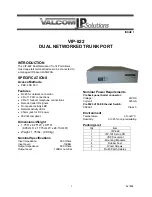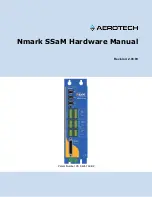
Rheonics | Switzerland | U.S.A.
SRV, SRD, SRV-FPC, SRD-FPC Installation and Intrinsic Safety Manual
P. 5
Version 2.0, Updated: October 29, 2020
Rheonics GmbH, Klosterstrasse 19, 8406 Winterthur, Switzerland
©Rheonics. Rheonics confidential and proprietary information.
ATTENTION: Installation in hazardous environment locations shall be
made in accordance with IECEx 60079-14 and other applicable codes
and standards.
1.
Purpose of this manual
This manual contains information to enable the safe installation and operation of Rheonics SRV, SRV-
FPC, SRD and SRD-FPC sensors in areas that potentially contain explosive atmospheres. The manual is an
adjunct to the operation and configuration manual provided with the particular sensor to be installed. It
applies only to Rheonics SRV, SRV-FPC, SRD and SRD-FPC sensors labelled with the hexagonal ATEX
mark:
All other versions of Rheonics SRV/SRD sensors should NOT be considered safe to use in areas with
potential presence of explosive atmospheres.
2.
Description of the sensors and general installation considerations
Rheonics SRV sensors are used to measure and control the viscosity of fluids, mainly under process
conditions. Rheonics SRD sensors measure, in addition, fluid density as well as true dynamic and
kinematic viscosity. Each sensor has a symmetric torsional resonator as its sensitive element. The effect
of the fluid in which it is immersed on its resonant response
–
its resonant frequency and damping
–
is
measured and interpreted by the electronics unit with which it is supplied.
Both of these devices, hereafter referred to
collectively as “SR” sensors, are delivered in a version that is
intrinsically safe. That means that as long as the sensors are installed and operated as specified in this
manual, they are incapable of igniting explosive atmospheres in which they operate, provided they are
operated within the envelope of parameters described in this manual.
Each Rheonics SR sensor is delivered paired with an electronics unit that both operates the sensor and
transmits its measurement values over one of a variety of interfaces. The electronics unit is not itself
intrinsically safe. When operating Rheonics SR sensors in a hazardous area, one or more Zener diode
barriers must be installed between the Rheonics SR sensor and its electronics unit. This barrier serves to
limit the amount of current and voltage available to the sensor in case of a fault in its electronics unit
and/or within the sensor itself. The specifications for the required barriers are given in section
below.






































